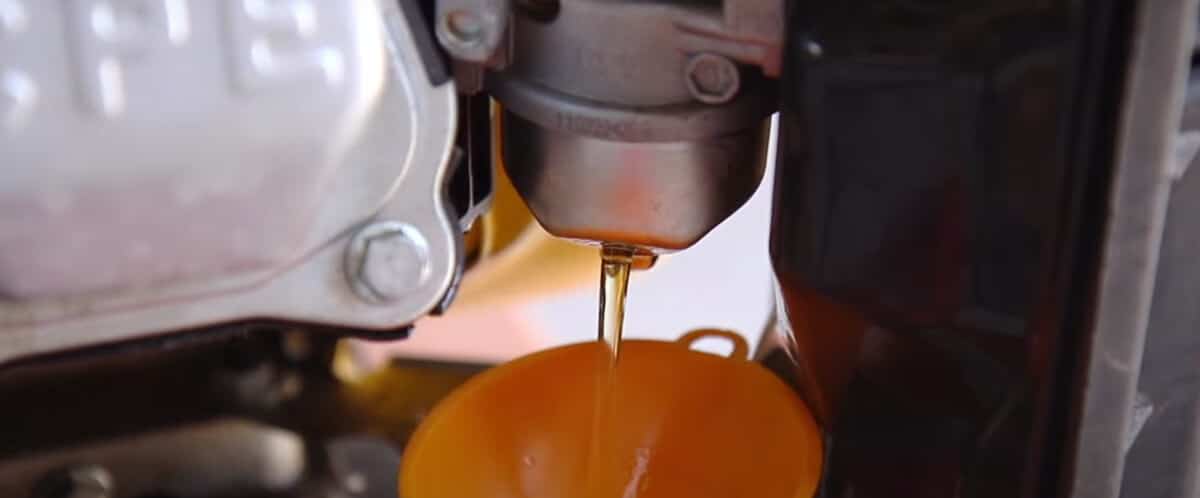how to drain gasoline from your generator
- BY BISON
Table of Contents
Draining your portable generator’s fuel tank is one of the most reliable ways to store your generator and ensure its longevity. Help extend the life of your generator, avoid costly maintenance, and most importantly, be ready for the upcoming season. If the generator is being stored for an extended period, removing gasoline prevents fuel from stalling and clogging the carburetor.
Since old gasoline can cause starting problems, knowing how to drain generator gasoline safely is an important part of keeping your generator in top condition. This article provides a detailed step-by-step guide on how to safely and effectively drain gasoline from a generator while following proper safety precautions.

Do I need to drain the petrol from the generator?
If you use a fuel stabilizer, you don’t have to worry about gasoline in your generator during winter storage.
However, draining the gasoline from your generator is the surest way to prevent fuel-related problems during long-term generator storage.
If you’re wondering if it’s necessary to drain the gasoline from your generator, the answer is yes. This is an important aspect of proper generator maintenance that can effectively extend the service life and optimal operating rate of the equipment while minimizing potential repair costs.
Over time, gasoline left in a generator can deteriorate and form a sticky resin, commonly known as varnish. This substance can cause a range of operating problems, from a clogged carburetor that reduces generator performance to a serious failure that renders the generator unusable. It can also lead to corrosion of the generator housing and system.
In general, if you anticipate that your generator will be idle for an extended period (usually 30 days or more), China BISON strongly recommends draining the gasoline from the generator.
Below, China BISON will take a closer look at the step-by-step process of running out of gas in a generator, taking you through each stage carefully and safely.
Tools and safety precautions
Tools required
When preparing to drain fuel from a generator, you’ll need to gather several essential tools and observe important safety measures. Necessary tools include:
- Fuel container
- Wrench or screwdriver
- Siphon pump or fuel line clamp
- Rag or towel
- Funnel
- Sealable plastic bag
Safety precautions
- Work in an area with good air circulation: Gasoline fumes can be toxic and flammable, so it is best to work outdoors or in a well-ventilated garage. Avoid the accumulation of fuel vapor.
- Stay away from open flames or sparks: Gasoline is extremely flammable, and even a small spark can ignite the fumes. The scene should be cleared of open flames, cigarettes, or equipment that could create sparks, and a fire extinguisher for flammable liquids (Class B) should be kept on hand in case of emergency.
- Wear personal protective equipment (PPE): Protective gloves and goggles: Protect hands or eyes from accidental splashes.

How to drain gasoline from your generator
The risks of improper handling of gasoline cannot be overstated, so all fuel and gas venting steps need to be performed carefully. Below, China BISON will guide you through common methods of draining fuel from a generator.
Turn off the generator: First, make sure the generator is turned off and disconnect all connections. Then let it cool for a while and then move the generator set to a well-ventilated area to ensure safety during the process.
Open the gasoline cap: Unscrew the fuel tank cap to promote air circulation in the gas tank.
Locate the fuel tank and fuel lines: Make sure you can easily reach the fuel line. If there is a plastic cover in the way, carefully remove it.
Locating the carburetor: Consult your generator manual to locate the carburetor. Remove the bolts from the carburetor and allow any remaining fuel to drain into a container. Use pliers to place the bolt back on the carburetor and tighten it securely.
Secure the bolt: Use pliers to reattach the bolt to the carburetor, making sure it is secure.
Close fuel valve: Before disconnecting the fuel line, turn the fuel valve to the “off” position.
Disconnect the fuel line: Locate the clamp holding the fuel line that is not connected to the tank. Carefully remove the clamp and disconnect the tube from the fuel valve.
Prepare container: Place a container next to the generator. Place the disconnected end of the fuel line into the container. Tilt the generator slightly so all the fuel flows to one side and out of the lines.
Open the fuel valve: Once most of the fuel is gone, turn the fuel valve back to the “open” position to drain any remaining fuel.
Reconnect the fuel line: Carefully reconnect the fuel line, making sure it is secure. If necessary, close the gas tank lid and reinstall any caps or housings.

Generator maintenance after gasoline drain
- After the generator has completely cooled, wipe off dirt or oil with a rag and clean the exterior surfaces.
- Check the vents and fins for debris that may affect cooling during operation.
- Thoroughly inspect the generator. Check hinges, knobs, or other moving parts that may need lubrication; check and replace filters; check the integrity of the fuel system; remove and inspect spark plugs for wear or carbon deposits.
- If the fuel system is not completely drained, add a fuel stabilizer to give the fuel 12-24 months of validity, and run the engine for 10-15 minutes to evenly distribute the stabilizer in the system. For generators that are stored for a long time, the fuel system should be completely drained.
- Inspect the generator system, test the battery condition clean the terminals, and check all electrical connections and wiring for wear.
- Storage environment selection: clean, dry, cool, and weatherproof room, ideally between 40-80°F. Cover the generator with a breathable generator cover to prevent dust from entering and maintain air circulation. For generators with batteries, it is best to use a trickle charger to maintain the battery charge during storage, or remove the batteries separately and store them in a climate-controlled area.
Conclusion
Draining the generator before storage is one of the safest ways to keep your equipment trouble-free while in storage. It will prevent fuel-related issues that will prevent your generator from starting or, worse, forcing you to perform expensive maintenance or repairs.
If you’re a bit technical, you can drain the generator using a drain or fuel line. Also, you can use an external fuel transfer pump which is easier than the previous method. But remember that handling gasoline requires strict safety precautions. Please use approved containers and work in a well-ventilated area.
Welcome to BISON generator manufacturer to learn more about the use of generators. BISON is a globally recognized professional generator manufacturer with an excellent track record in the Chinese power equipment industry. Our extensive product line covers gasoline, diesel, and inverter generators, tailored for residential, commercial, and industrial use.
FAQs
Should you store or discard fuel from your generator?
If the fuel is still fresh, the drained fuel should be stored for later use. However, if the fuel spoils, be sure not to dispose of it on the ground, in drainage systems, or in any other body of water.
To prevent fuel degradation, all you have to do is add the correct fuel stabilizer to your storage container.
However, you can't just dump the fuel wherever you want because the liquid is still flammable and toxic. You will need to contact your local authorities who will direct you to the appropriate dump site.
What's the easiest way to empty a water tank?
Removing the generator side cover and fuel line or unscrewing the carburetor drain screw can be overwhelming for most people. Therefore, running the generator until the gas runs out is the easiest and safest option.
Do all generators need to be vented?
Like gasoline and diesel, which require stabilization or drainage before storage due to oxidation, all motors running on liquid fuels require the same antifreeze steps. Thankfully, propane generators are an exception and do not require draining or stabilization.
contact us
related product categories
Get in touch to speak with our experts!








